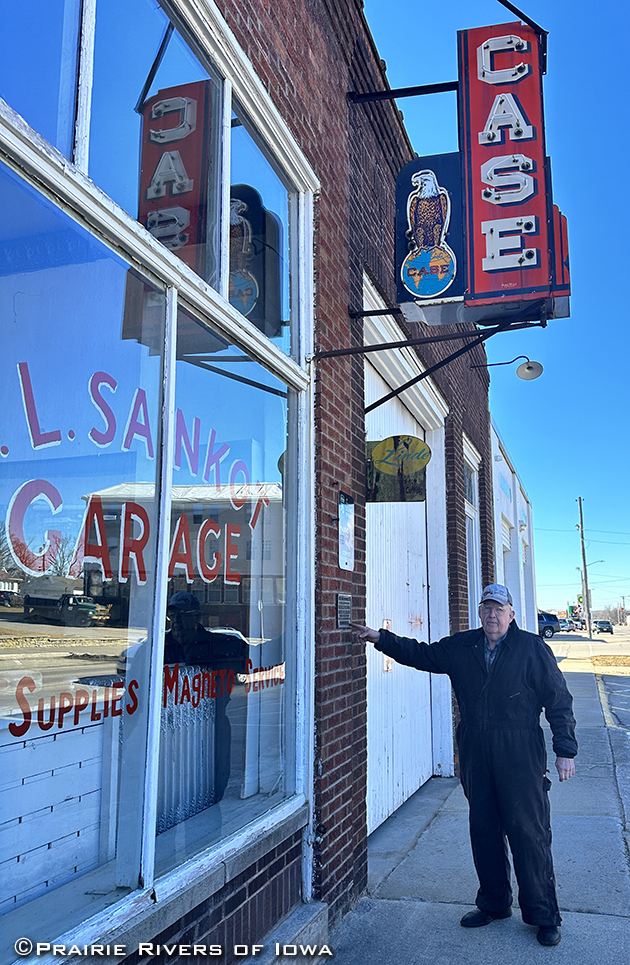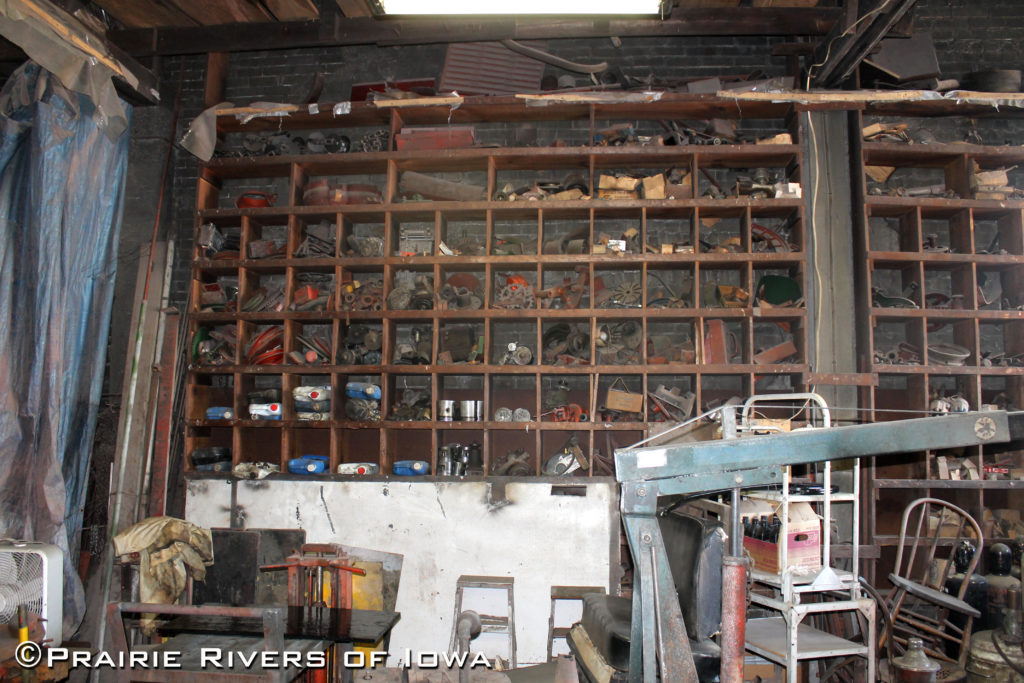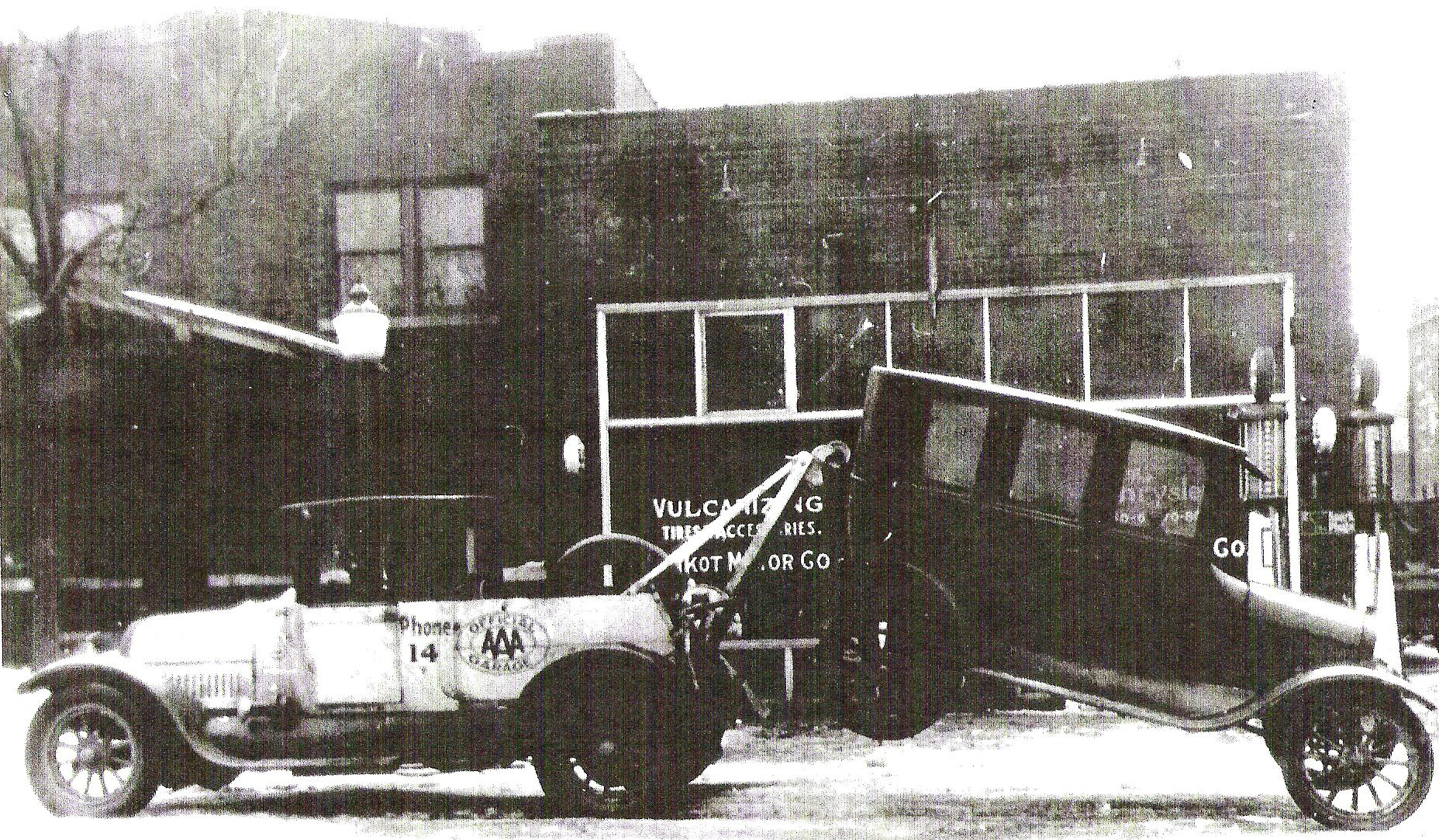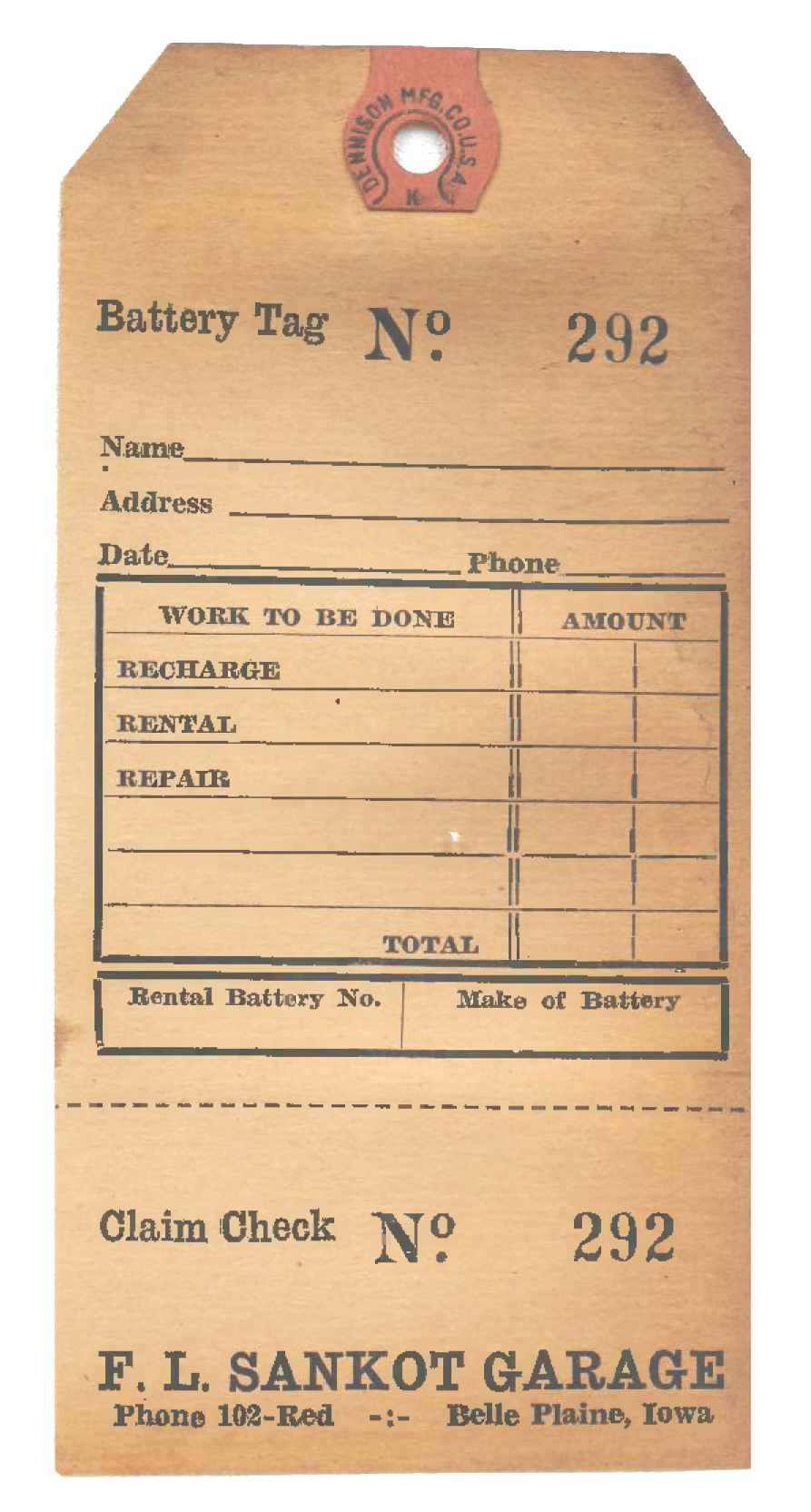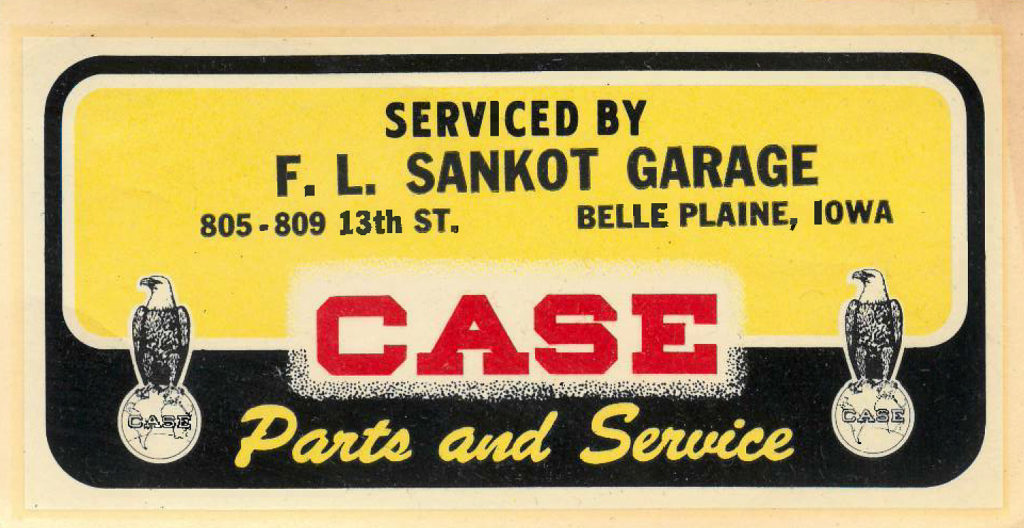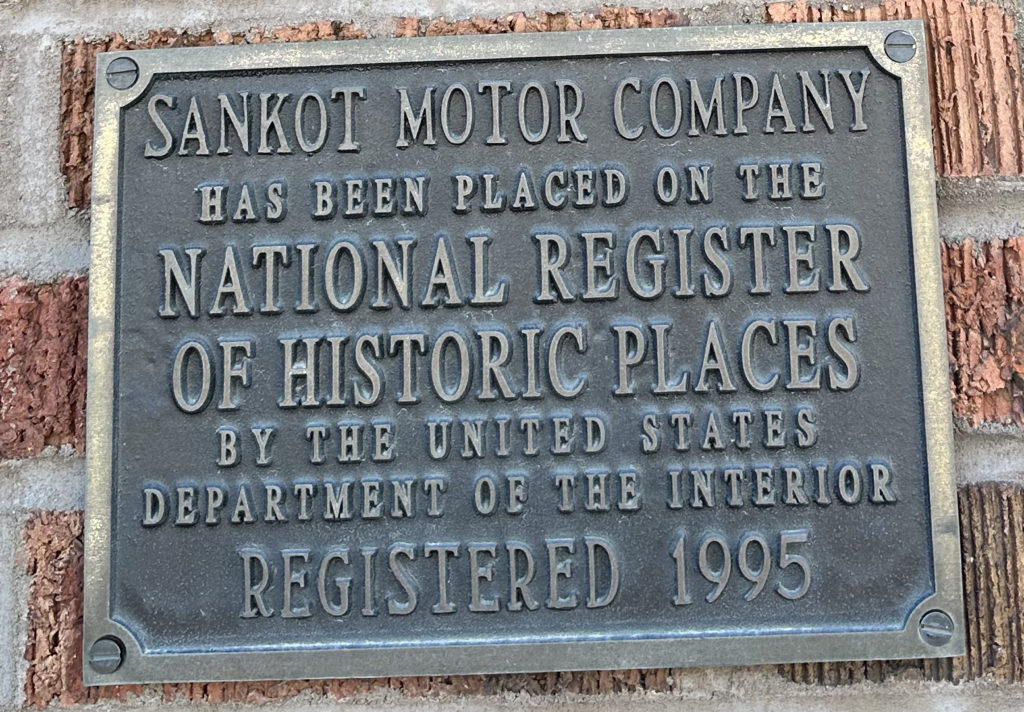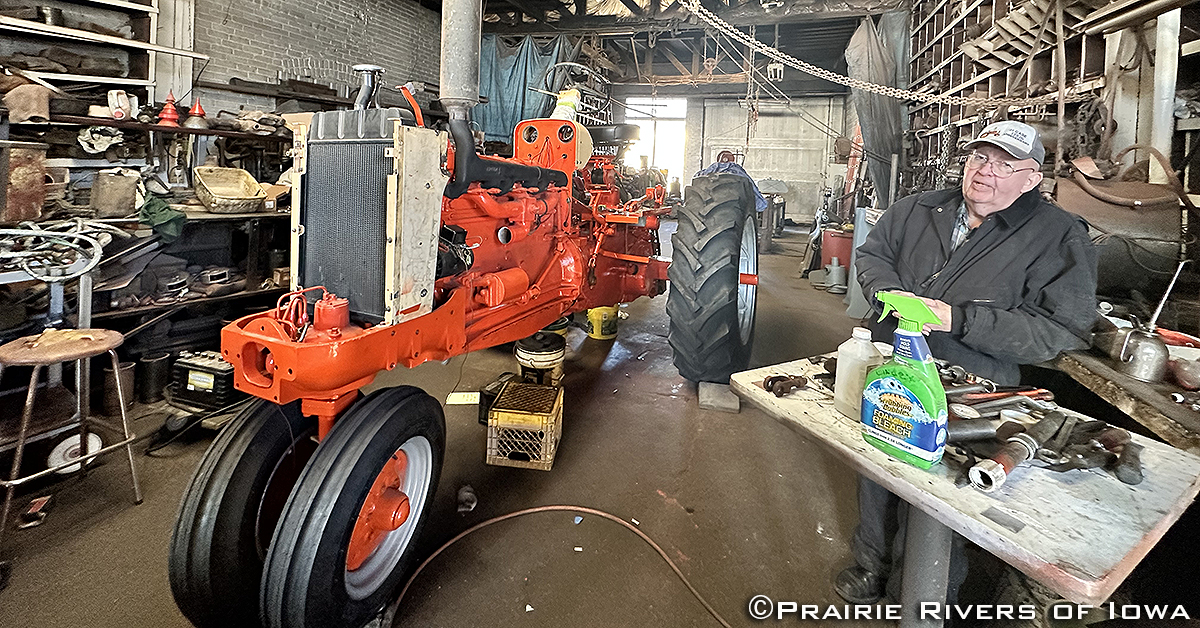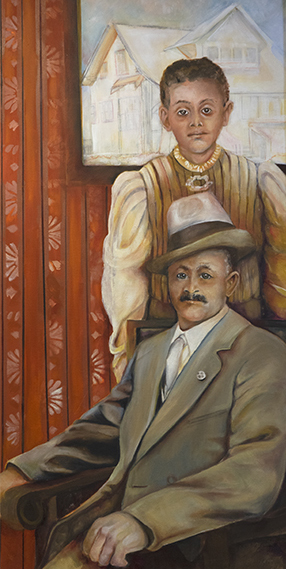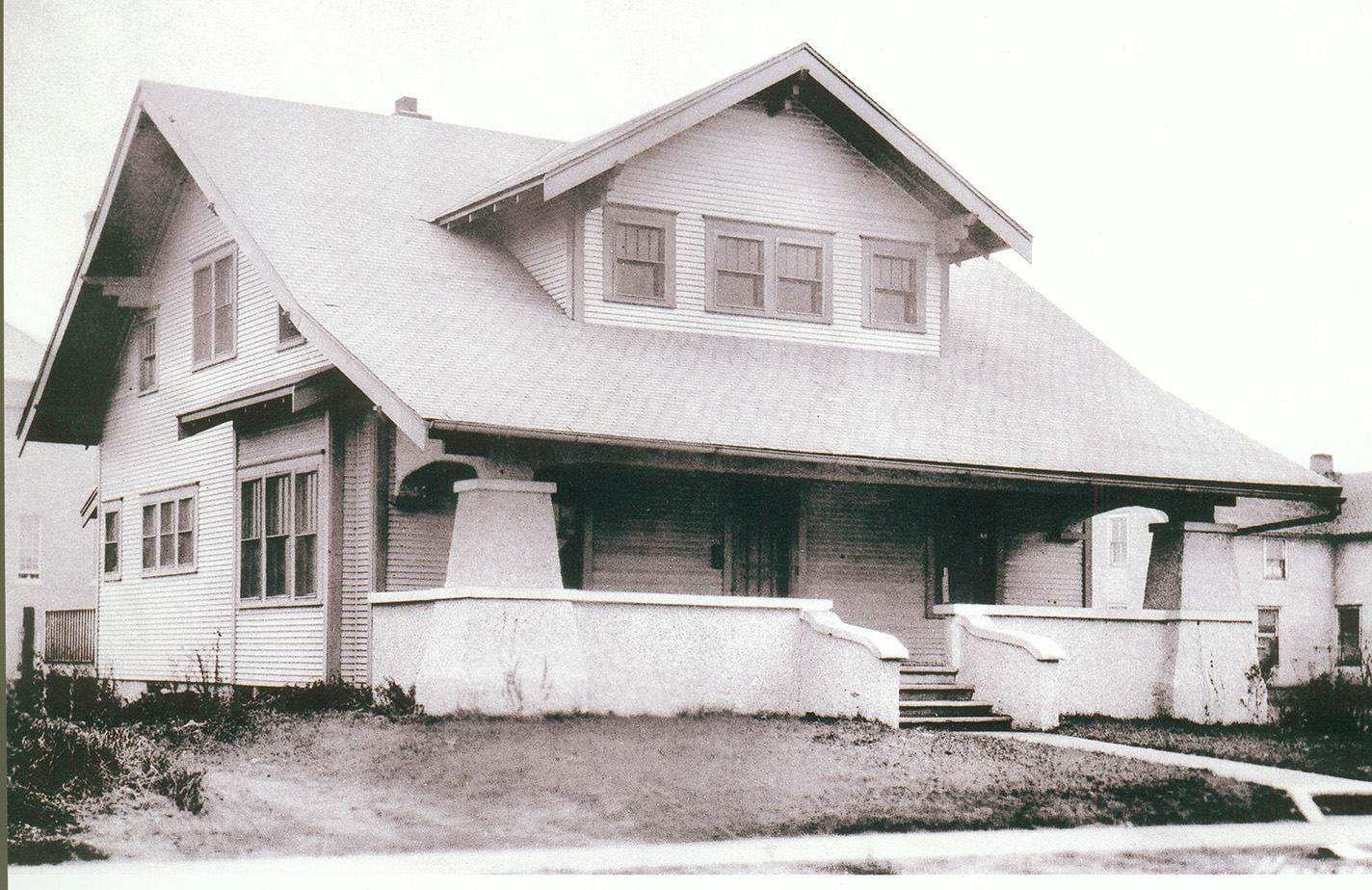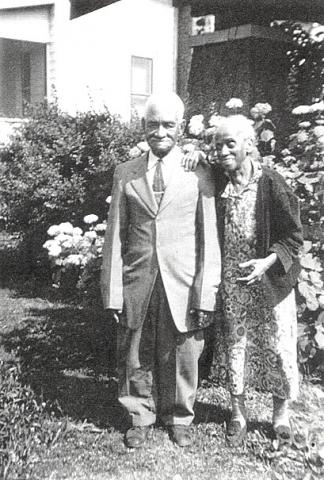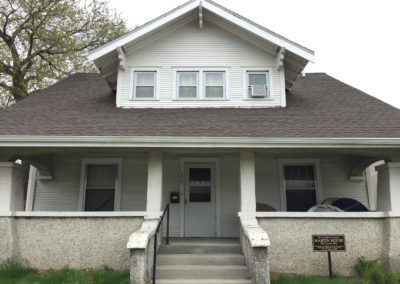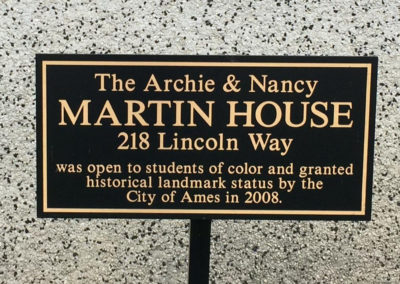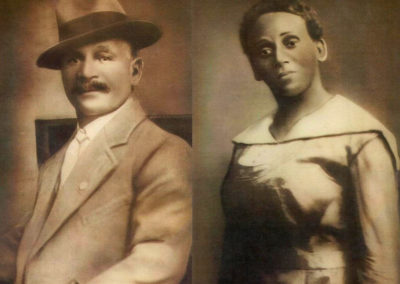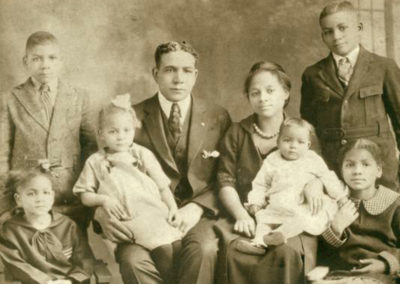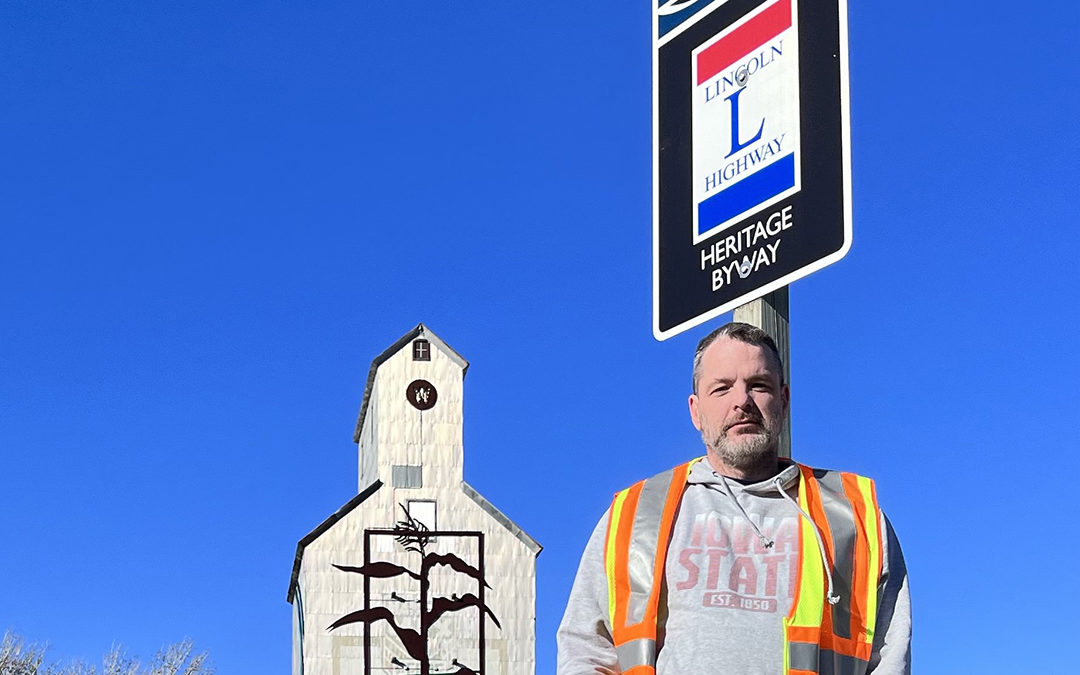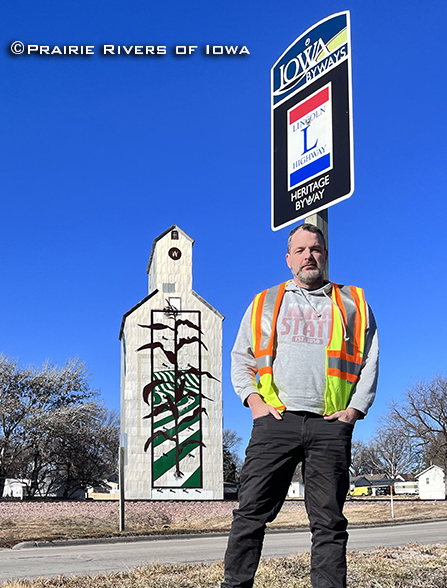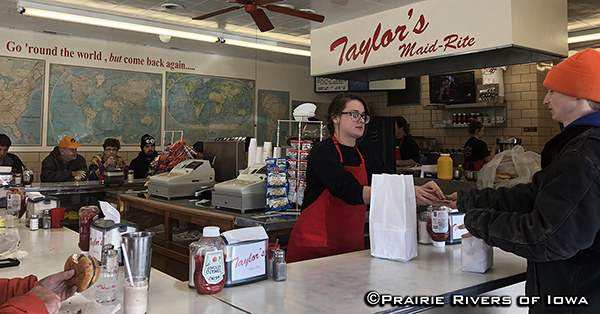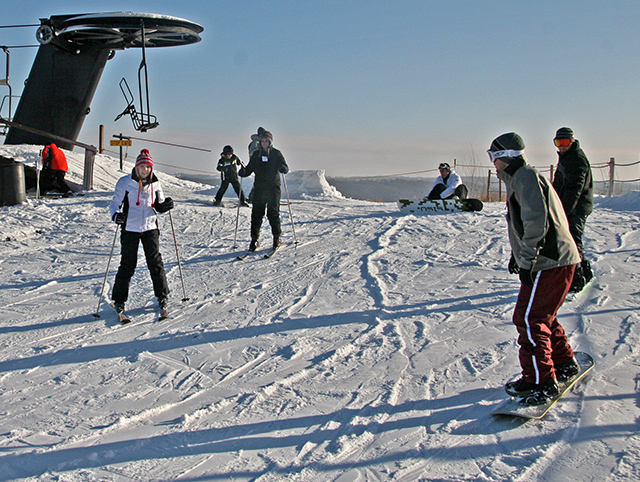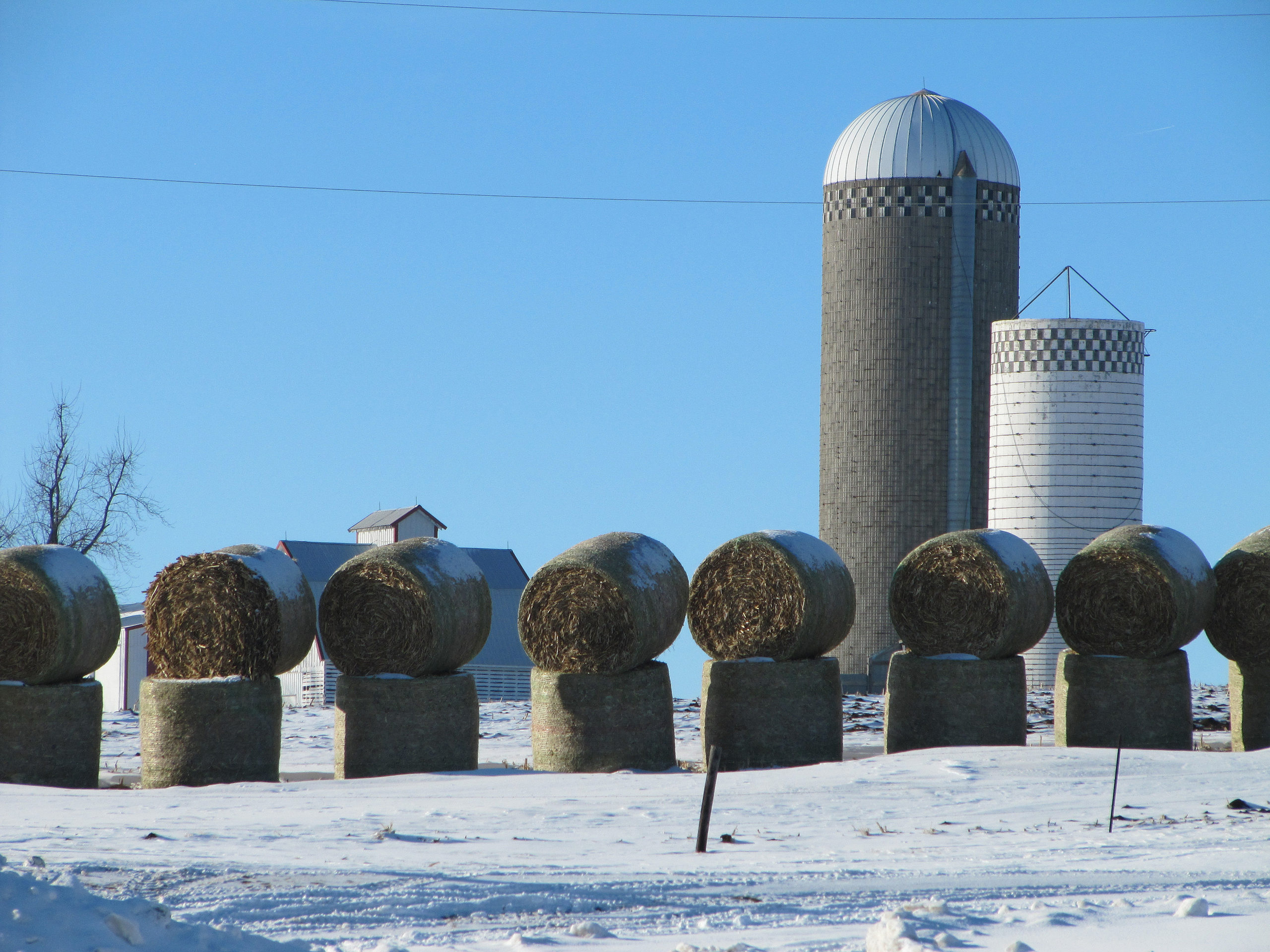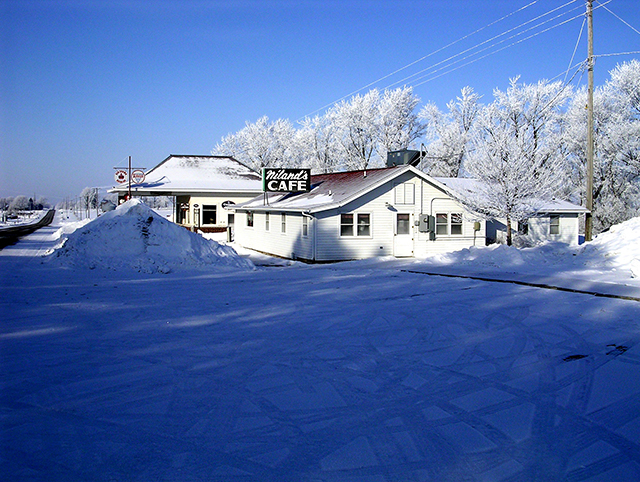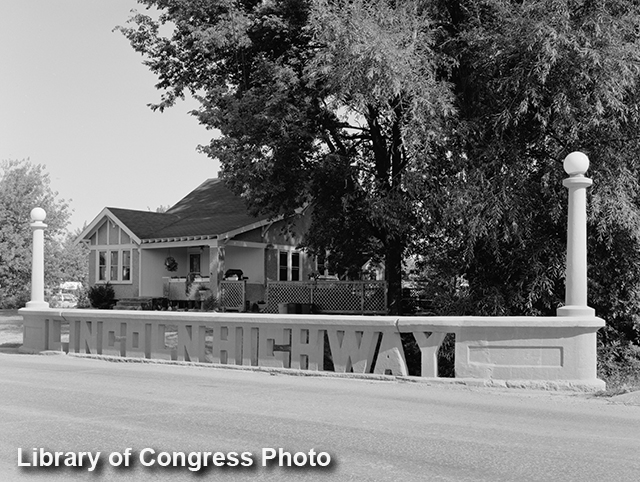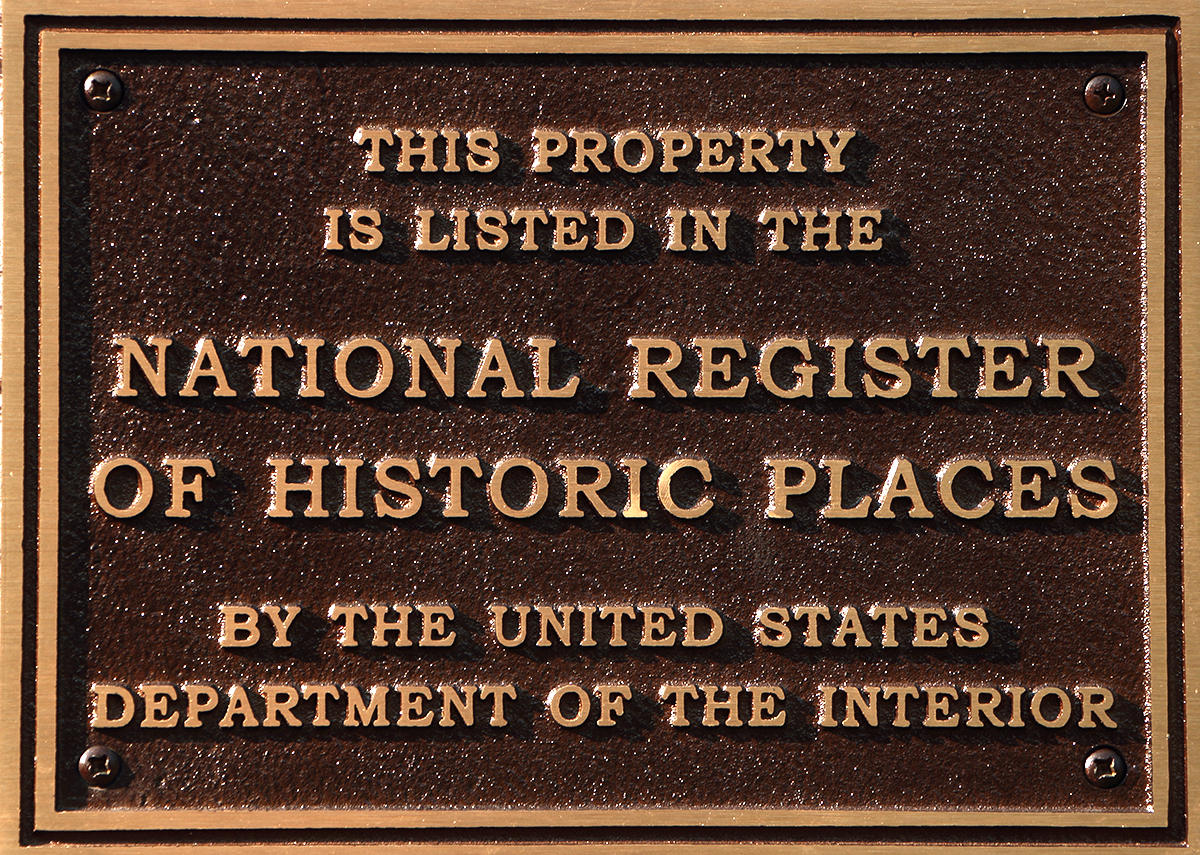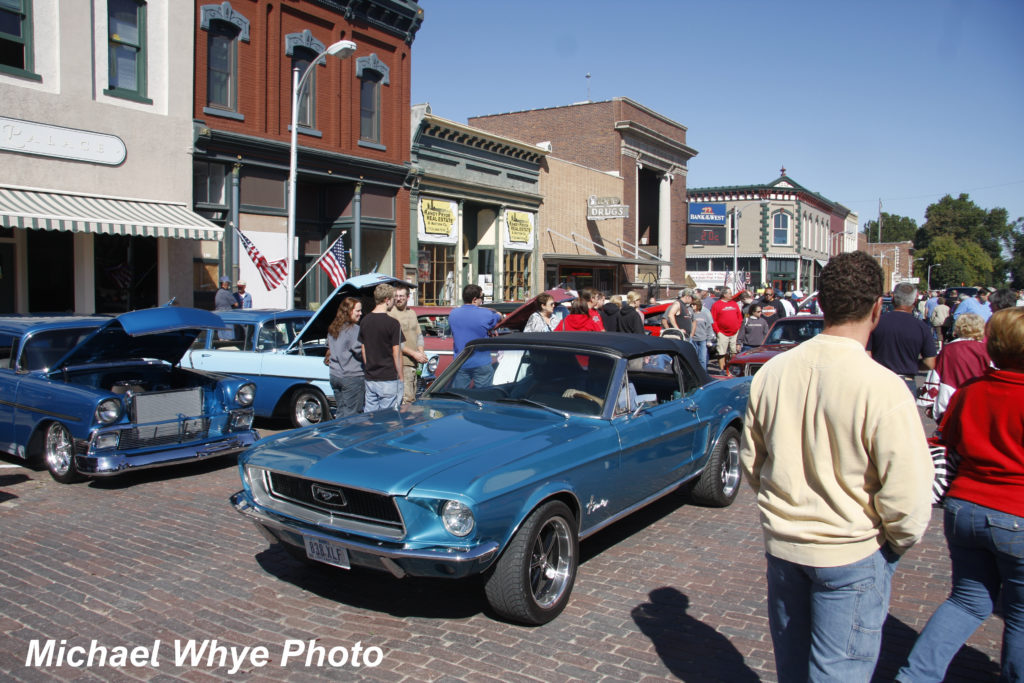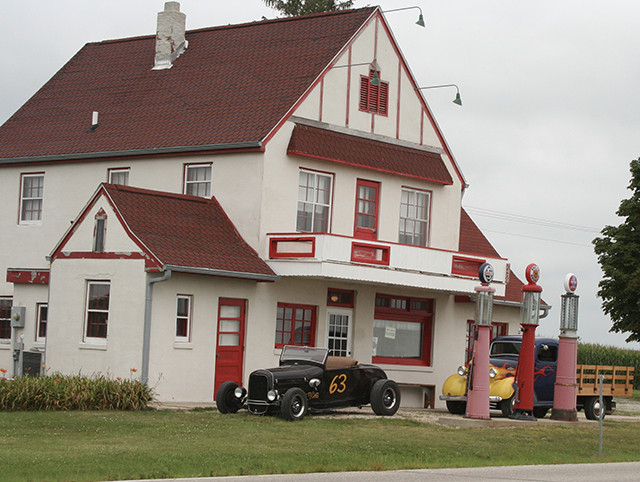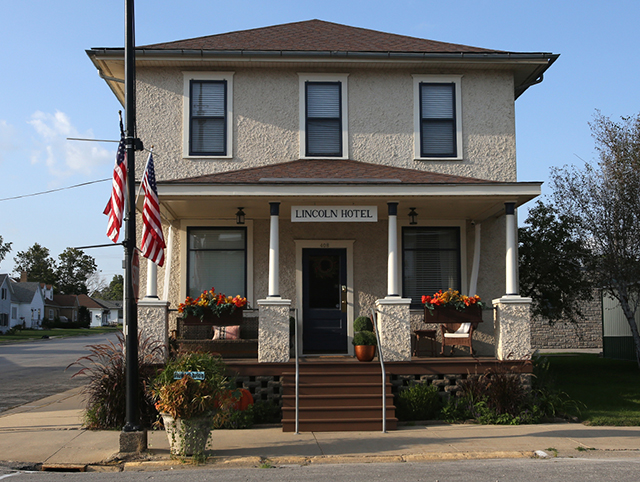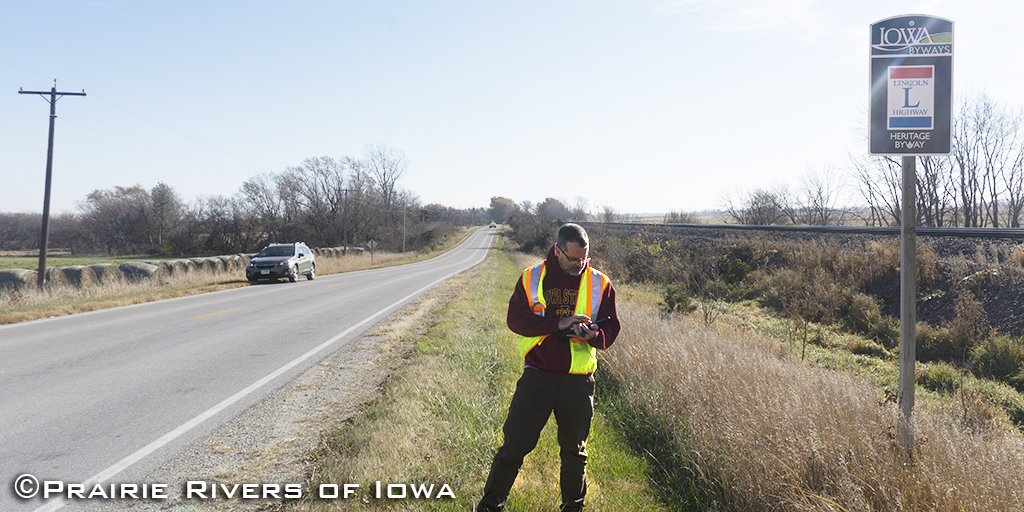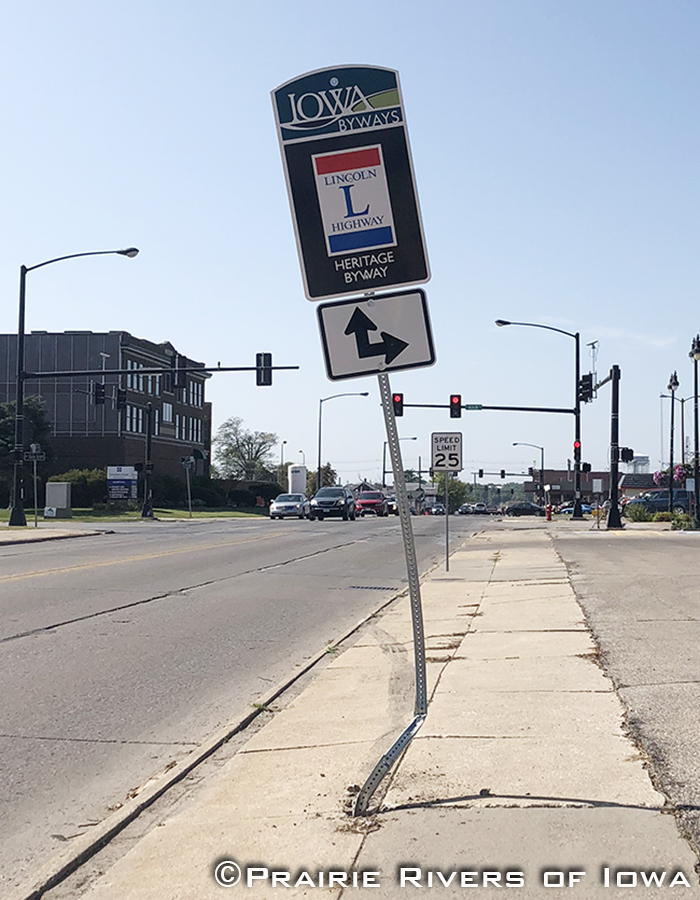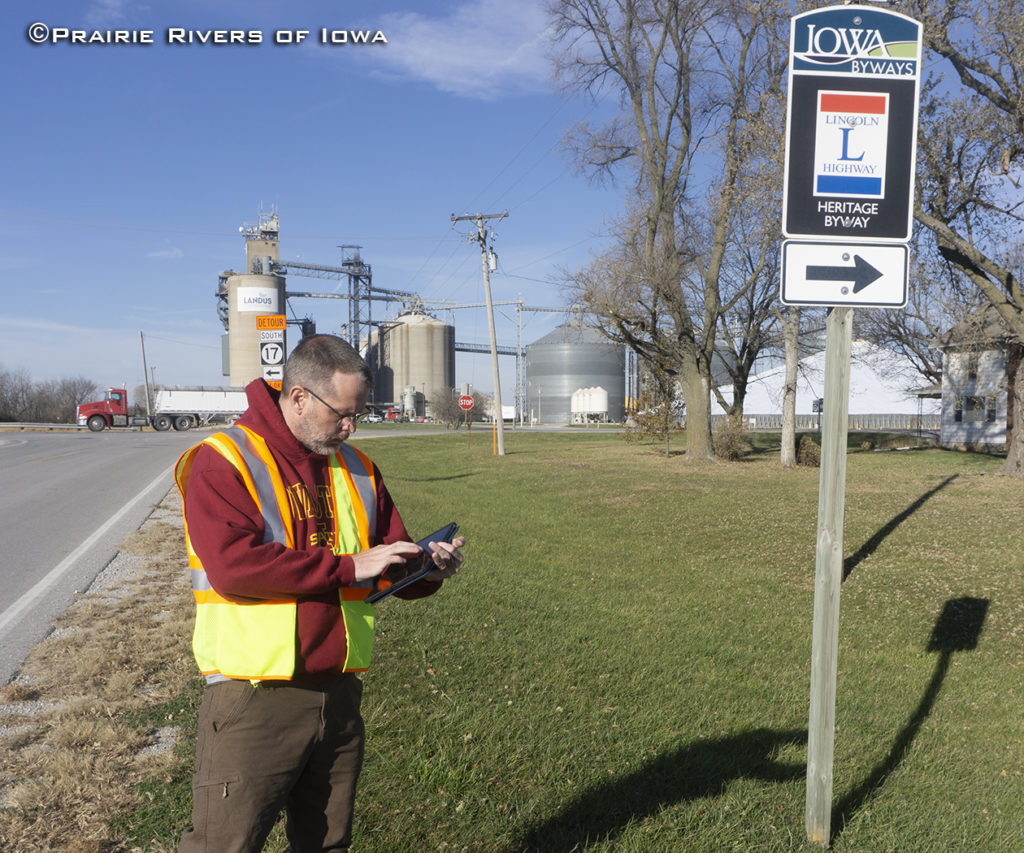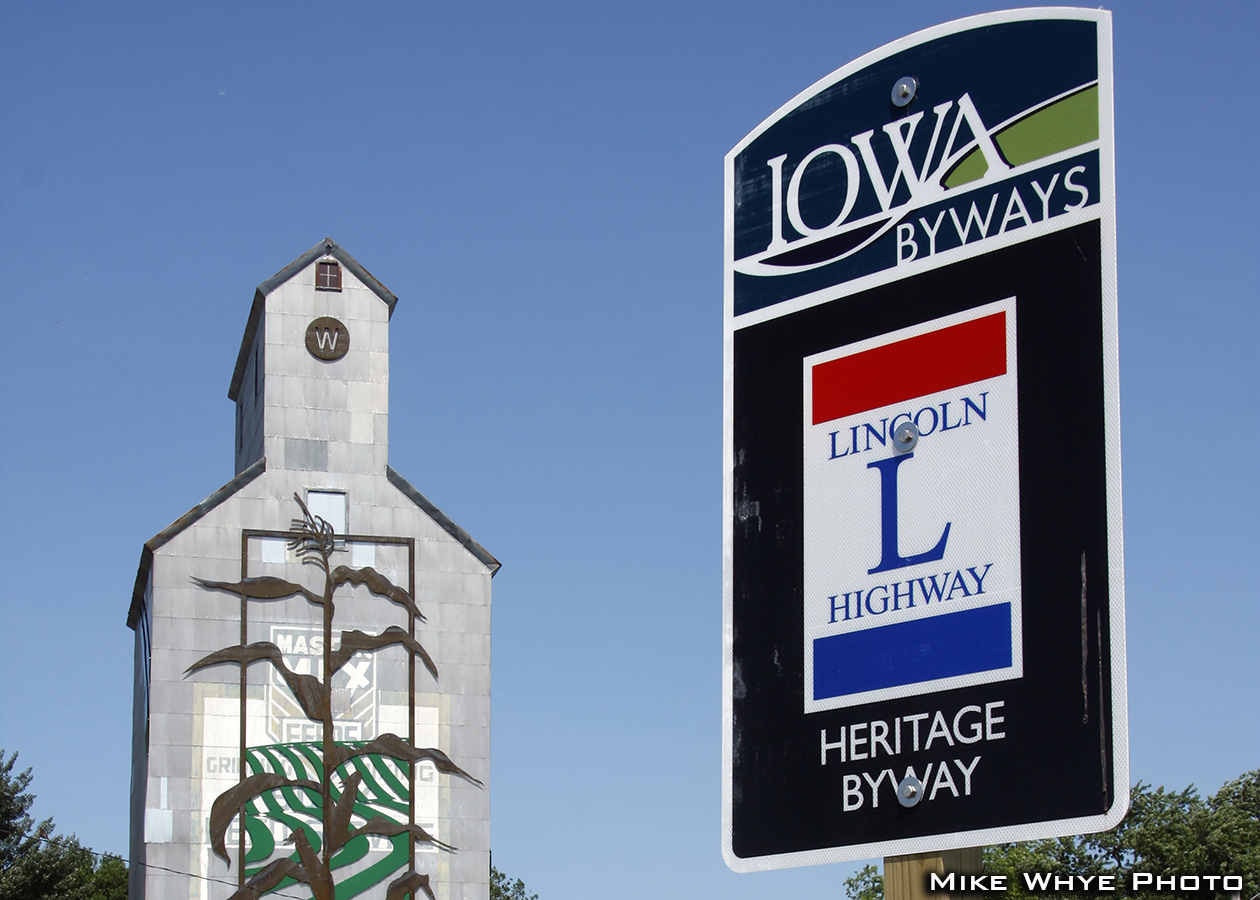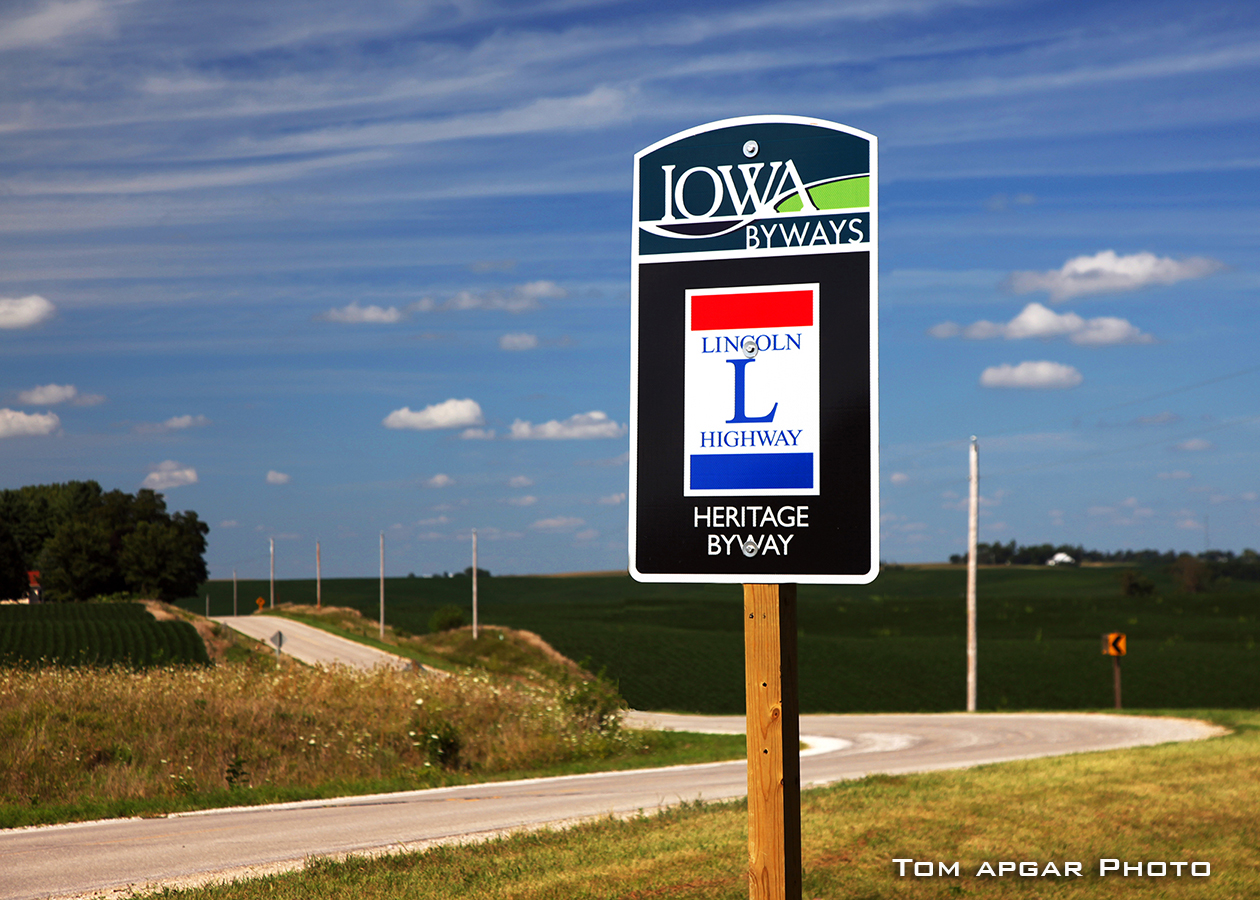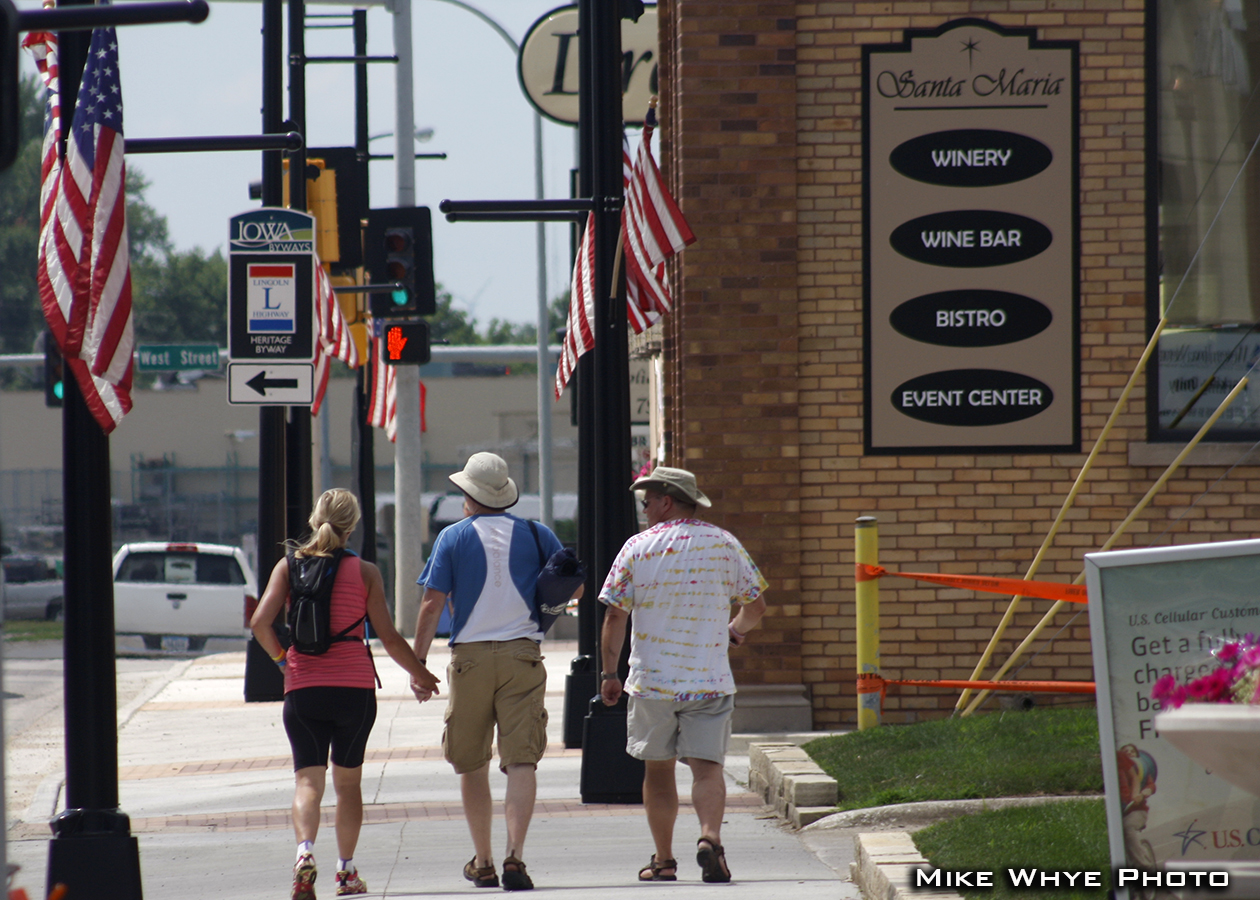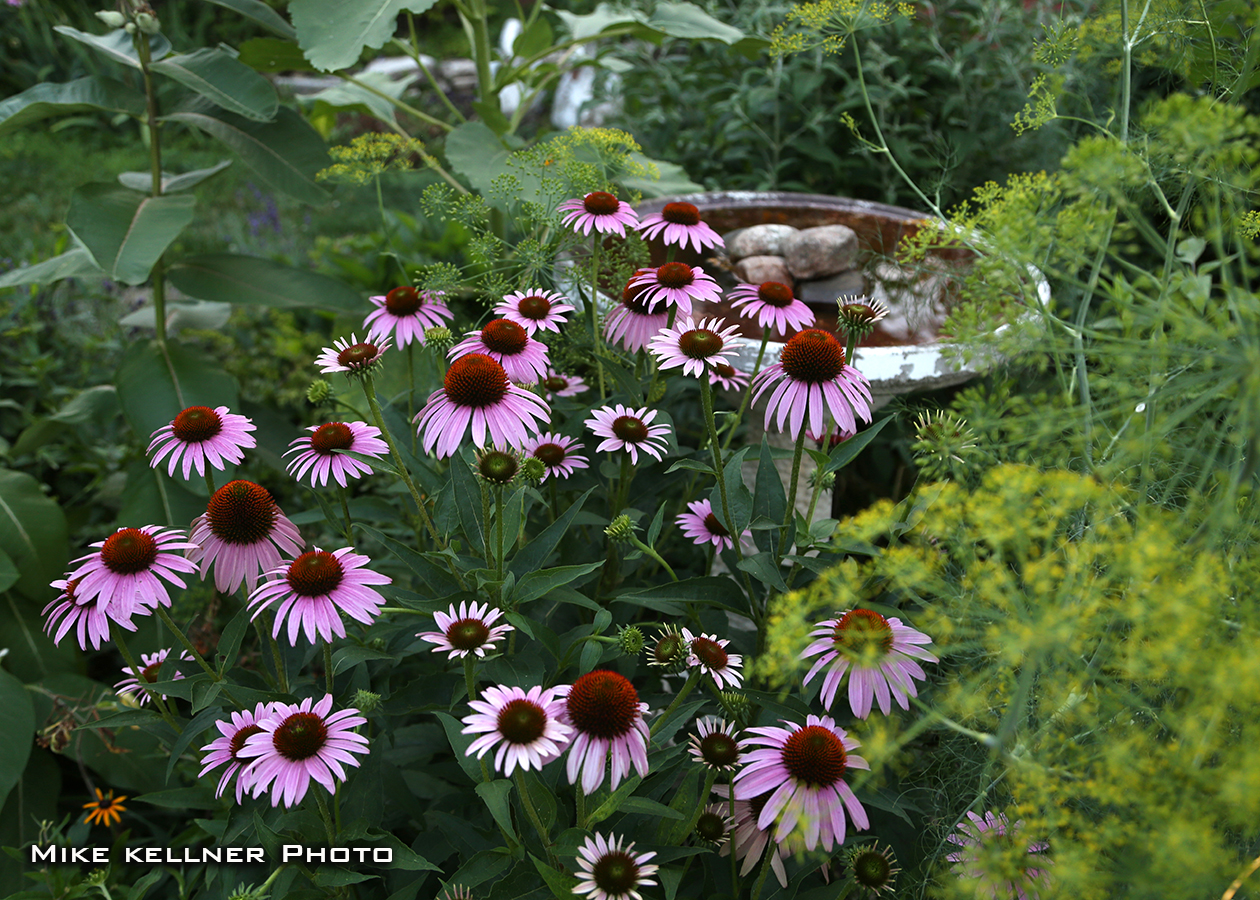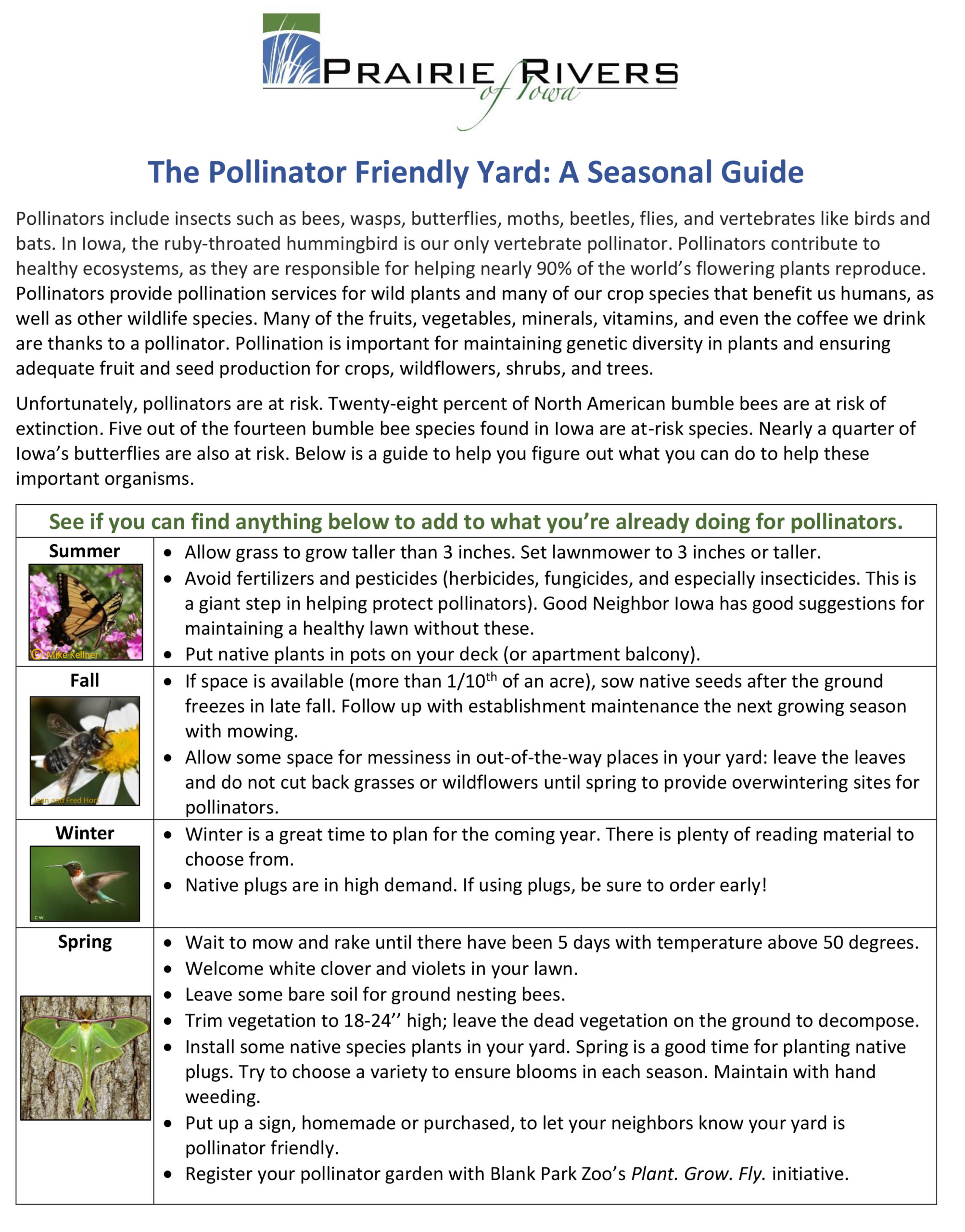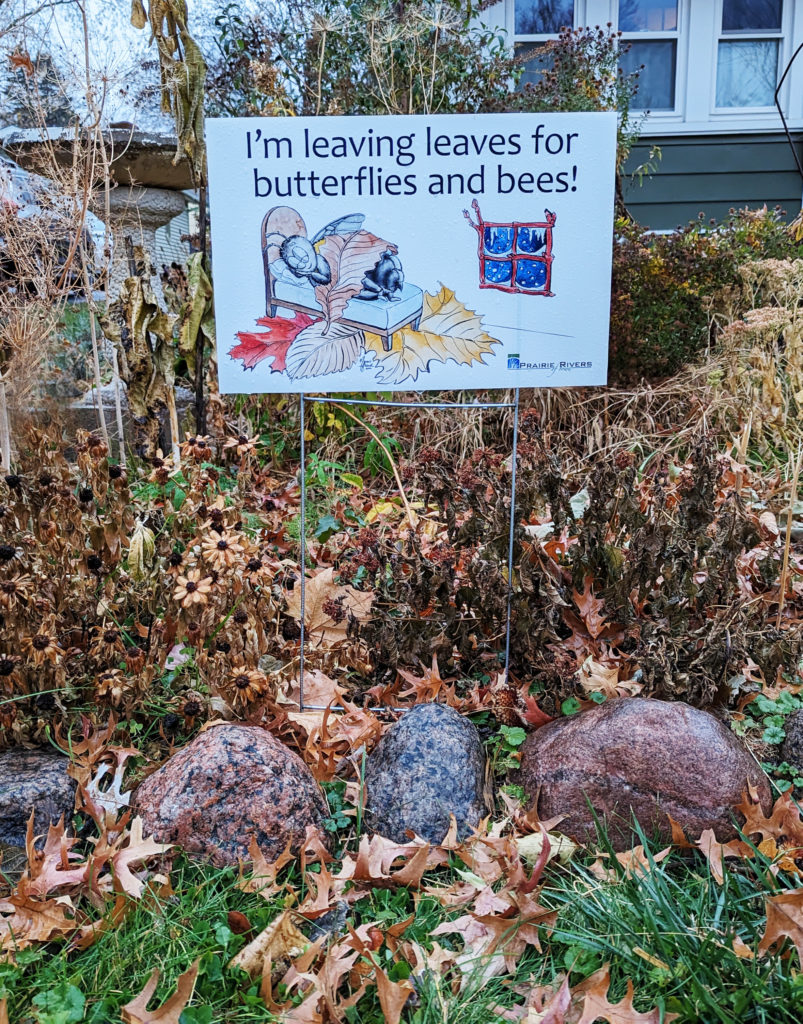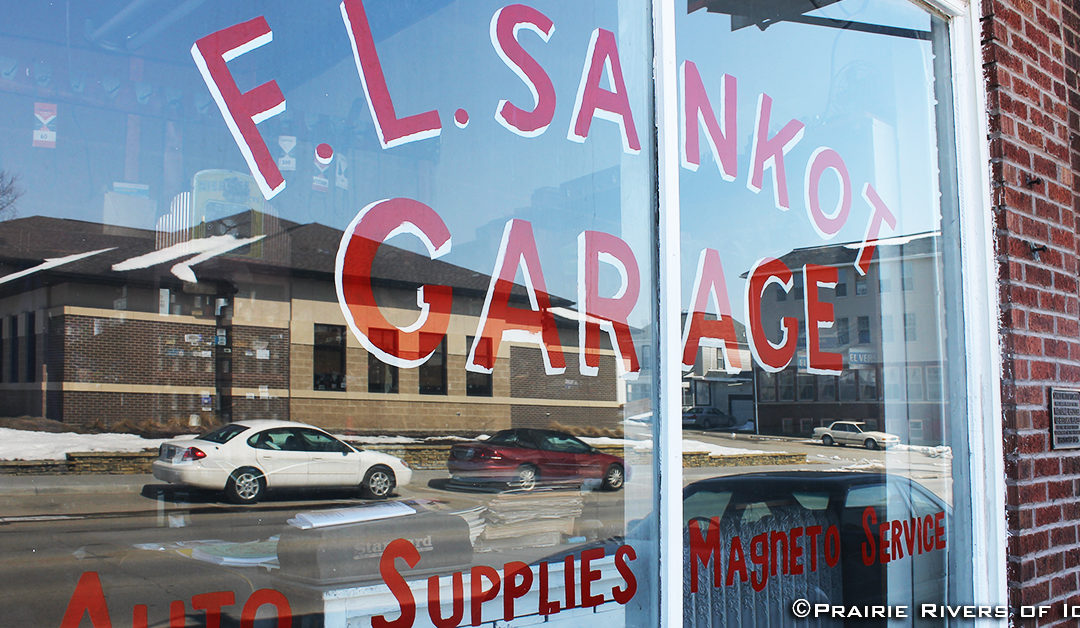
Step Into the Sankot Garage for Treasured Bits of Lincoln Highway History
To get to Sankot Motor Company, or Sankot Garage as it’s known in Belle Plaine, find the Lincoln Café where the Lincoln Highway Heritage Byway crosses 8th Avenue in the middle of town. Treat yourself to the lunch special – it was fried fish the Friday when I was there – then walk east on the Byway barely half a block. The big red Case sign, the neon long gone, reaches out from the old red brick building to show you where you’re going. As you get closer, you’ll notice the large plate glass windows and the plaque that reads Sankot Motor Company has been placed on the National Register of Historic Places by the United States Department of the Interior. Registered 1995.
To step into Sankot Garage in Belle Plaine today is to step into the bits and fragments of small-town Lincoln Highway history. A massive safe rests alongside a beaten-up wooden table with worn, ornate hardware; racks of aging car parts line the walls up two stories. On one side of the building, a skylight allows the sun’s rays to illuminate bins of car parts, hoists hanging from beams, and a partial tractor body waiting for repair.
Dust and the faint scent of oil hang in the air. Over a century old, Sankot Garage is a place where the parts and pieces of the decades intermingle.
Owner Bill Sankot greets me. Dressed from neck to ankles in overalls, he’s taking a break from his current Case tractor restoration project. Bill is great-nephew of O.B., Charles, and Sid, the brothers who owned the company back in the 1920s, those heady years when the country’s major coast-to-coast highway ran through Belle Plaine. This was the era before interstates facilitated travel bypassing towns and their amenities. Before the interstate rest stop, roads were designed to angle through towns, where travelers could stop for gas or get a bite to eat at a local café.
If it was late in the day, they might decide to stay the night at a local campground, spend a dollar for a motel room, or splurge for a room at the Herring Hotel. The Lincoln Highway eventually brought enough travelers to keep 19 gas stations in business, according to Mitch Malcolm from the Belle Plaine Area Museum, “and they all were a going concern.”
Sankot sold Chrysler cars and auto parts and did repairs in the 1920s and 30s. In those days before paved roads, Iowa had the dubious distinction of having both dirt roads that turned into “gumbo,” sucking in automobiles in inclement weather, and the resistance to modern paving methods.
Every town needed a good towing service. Sankot Garage was open 24 hours a day, seven days a week, and offered all-night towing and wrecker service. A poster on the wall displays photos from Sankot history. It shows a tow truck hauling a Model T Ford and some of the famous people who stopped by on their travels west from Chicago, including heavyweight boxer Kingfish Levinsky, crouching in a boxing stance for the camera.
Over the decades, while so many other family-owned businesses disappeared, Sankot Garage continued to reinvent itself to serve the changing needs of its customers. Back in the day before rural electrification, Sankot rebuilt and recharged batteries needed for autos, lights, and radios. People usually brought batteries in for recharging on Saturday, the day they went to buy groceries. Bill shows me one of the claim checks customers were given.
Bill’s dad, F.L. Sankot, purchased the business in 1937, and it switched from selling and fixing automobiles to Case and Oliver tractors and implements. Bill and his brother Jerry bought the garage in 1985, and they continued to repair a variety of autos, trucks, tractors, and farm implements. Once Interstate 80 sapped clientele, things got quieter, but there is still enough business to keep Bill busy.
What’s next for Sankot Garage? None of Bill’s children are inclined to take over the business, but as long as Bill’s there, he’s minding the store … and the history.

